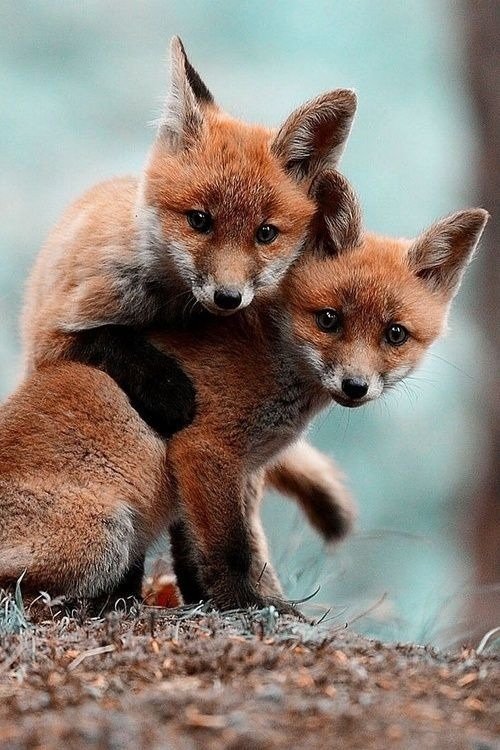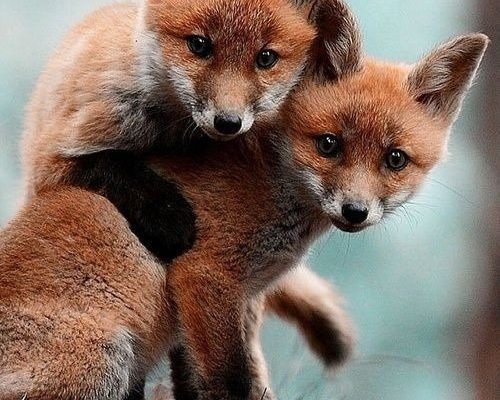
Imagine a cozy den, a little home tucked away in the earth. That’s where the magic begins! Red foxes, particularly in the wild, take the role of parenthood seriously, and it’s a journey filled with challenges and triumphs. If you’re curious about how these crafty creatures care for their young, you’re in the right place. Let’s dive into the world of red fox parenting and see what makes them such dedicated caregivers.
Creating the Perfect Home: The Den
The first step in raising kits is finding the right place to call home. Red foxes usually dig out dens in secluded areas, often choosing spots under tree roots or rocky outcrops. These aren’t just any old holes in the ground—they’re like cozy, underground apartments. Dens provide safety from predators and harsh weather, which is essential when little ones are involved.
Foxes often use the same den year after year, making them feel more like home. Can you picture a family moving into a new house? That’s how they feel about their den. It’s their sanctuary, a place where they can relax and raise their kits in safety. The dens are usually about 2 meters deep with multiple entrances, so if danger approaches, the kits have a way to escape.
When the time comes to have their young, usually in spring, the female fox (called a vixen) prepares the den by lining it with fur and soft materials. This ensures the kits are comfortable and warm, much like how we might prepare a nursery for a baby.
The Arrival of the Kits
Once the den is ready, the exciting part begins—the arrival of the kits! Red foxes typically have litters of about four to six kits, although they can have as few as one or as many as thirteen. Isn’t that wild? The entire process lasts around 53 days, and once born, the kits are blind and completely dependent on their mother.
Here’s the thing: the first few weeks are critical for survival. The vixen stays close to her kits, nursing them and keeping them warm. During this time, she won’t leave the den much, as her main job is to care for her little ones. If you think about it, it’s like being a new parent; the mother has to juggle everything to make sure her babies are safe and healthy.
The male fox (the dog) also plays a supportive role. He hunts for food and brings it back to the den so that the vixen can eat. It’s a partnership that shows how important teamwork is, especially when raising a family.
Nurturing and Teaching the Kits
As the kits grow, they become more curious and adventurous. Around three to four weeks old, they open their eyes and begin to explore the den. This is where the mother’s role shifts from caregiver to teacher. Honestly, for any parent, this is such an exciting time!
The vixen encourages her kits to leave the den, but she keeps a watchful eye on them. She’ll bring food for them to munch on and teach them the skills they’ll need to survive in the wild. This might include how to stalk prey or avoid becoming someone else’s dinner. Just like how parents teach their kids about the world, the vixen is helping her little ones navigate their surroundings.
It’s fascinating to note that kits learn a lot through play. They’ll wrestle and chase each other, practicing their hunting skills. It’s like a playful training camp, and it’s crucial for their development. Here’s a fun fact: the more they play, the better they get at being foxes!
Feeding the Kits: A Balanced Diet
As any good parent knows, feeding your kids the right food is essential. In the wild, this means hunting. The male fox is the primary provider, but the vixen will also gather food. Their diet consists of small mammals, birds, insects, and even fruits. It’s a balanced menu that ensures the kits grow strong and healthy.
You might wonder how the vixen decides what to bring home. She’s quite the strategist! She’ll hunt based on what’s available and how much energy she has. If food is scarce, she might have to get a bit creative. For example, if rabbits are hard to catch, she might focus on smaller creatures or even scavenge if necessary.
When the kits are about eight weeks old, they start to eat solid food. This is a big step in their independence. The vixen gradually introduces more variety into their diet, teaching them what’s safe to eat and what to avoid. It’s a practical lesson in survival!
Socialization and Learning to Hunt
As the kits continue to grow and develop, socialization becomes a vital component of their upbringing. They learn how to interact not just with each other but also with other foxes in the area. This is where their social skills come into play. It’s fascinating to think about—just like kids learning to play nicely with their friends, these kits are learning how to navigate their social world.
Around three months old, the kits start to join their parents on hunting trips. This is a crucial moment in their lives. They begin practicing their pouncing skills and learning how to work as a team. Imagine them playing a game of tag, but instead of catching each other, they’re gearing up to catch their dinner.
The male fox often encourages this behavior by demonstrating hunting techniques. He might lead them to a good spot and show them how to stalk quietly. It’s a mix of learning through observation and hands-on experience, which is how many animals, including humans, learn best.
Leaving the Nest: The Next Chapter
Eventually, the exciting journey of childhood comes to an end for the kits. By the time they’re around six months old, they’re ready to venture out on their own. This transition is bittersweet—like sending your kids off to college, it’s a mix of pride and sadness.
Before they leave, the mother and father fox ensure they’re well-prepared. They’ve taught them essential skills, so the kits have a good chance of surviving in the wild. The parents might still be nearby, keeping an eye out for their young ones as they set out to create their own homes.
Interestingly, some family bonds remain strong even as the kits become independent. They may stay in the area for a while, helping their parents hunt or even forming small family groups before fully branching out. This family dynamic adds an additional layer of social structure in the wild.
Raising young in the wild is a remarkable journey for red foxes. From finding the perfect den to teaching their kits essential survival skills, these crafty creatures show just how much dedication goes into parenthood. It’s a vivid reminder of the intricacies of nature and how animals navigate challenges similar to those we face as humans.
So, the next time you spot a red fox, take a moment to think about the little ones they might be raising nearby. It’s more than just a wild creature; it’s a parent doing their best to bring the next generation into the world—full of adventures and learning along the way! Isn’t nature amazing?

